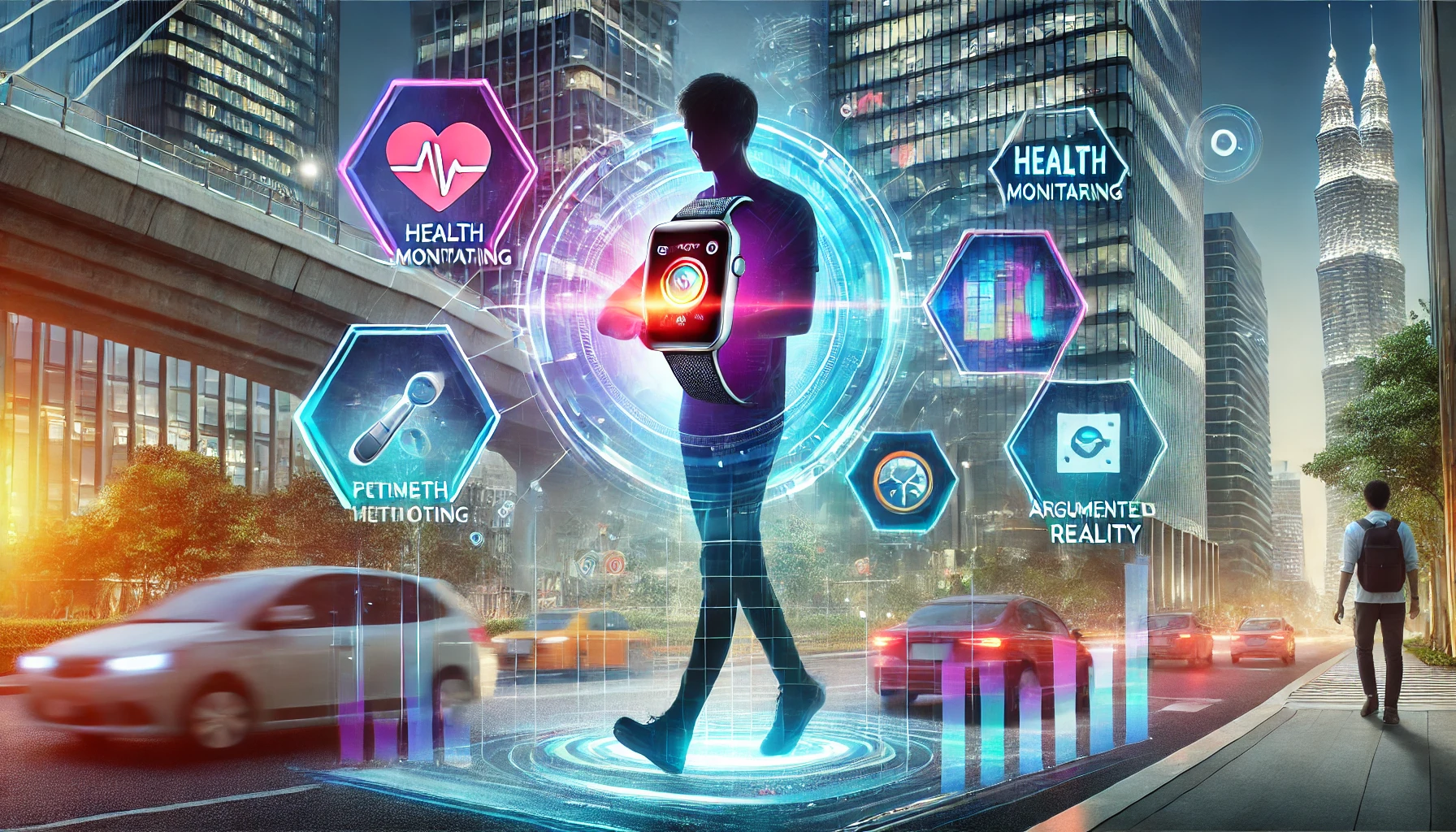The Rise of Wearable Technology: How It’s Redefining Health and Productivity. Wearable technology has seamlessly blended into modern life, revolutionizing the way we monitor health, enhance productivity, and manage everyday tasks. With innovations ranging from fitness trackers to advanced AI-powered devices, wearables represent a dynamic shift in how technology meets personal and professional needs. In this article, we explore the evolution of wearable technology, its current applications, challenges, and its promising future.
The Evolution of Wearable Technology
Wearable devices have come a long way since their inception. Early versions, such as basic pedometers, were limited to simple functions like step counting. Today’s wearables are sophisticated systems equipped with sensors, AI integration, and connectivity to smartphones and other devices. Major players like Fitbit, Apple, and Garmin have spearheaded this evolution, introducing devices that do far more than track steps—they measure biometrics, provide real-time insights, and enable communication.
These advancements have expanded the market beyond fitness enthusiasts to include professionals, older adults, and individuals managing chronic conditions. With constant innovation, wearables have transitioned from niche gadgets to everyday necessities for millions worldwide.
Health Benefits of Wearable Technology
1. Comprehensive Health Monitoring
One of the greatest impacts of wearable technology lies in health monitoring. Modern devices like Smart Rings can measure heart rate, blood oxygen levels, sleep patterns, and even detect irregular heart rhythms. For individuals managing chronic diseases such as diabetes, devices like continuous glucose monitors (CGMs) eliminate the need for invasive testing while providing real-time data.
Moreover, wearables are invaluable for older adults, offering fall detection and emergency alert systems. By providing immediate notifications to caregivers or emergency services, these devices are bridging critical gaps in healthcare access and response times.
2. Encouraging Active Lifestyles
Fitness trackers have redefined how people approach physical activity. Features such as step counting, calorie tracking, and personalized workout plans make fitness goals more achievable. Many wearables gamify these activities, adding motivation through achievement badges, leaderboards, and streaks. This not only encourages participation but fosters sustainable habits.
For individuals recovering from surgery or injury, wearables provide rehabilitation insights, ensuring safety and progress tracking under medical guidance.
3. Mental Health Support
Beyond physical health, wearable technology is making strides in mental well-being. Stress management features, such as guided breathing exercises and mindfulness reminders, are becoming standard. Devices can track heart rate variability (HRV), which helps users understand and address stress triggers.
With reminders to disconnect from screens, practice mindfulness, or take a walk, wearables support balanced digital habits. Explore more on maintaining such habits in Balanced Digital Diet: 8 Steps to Use Technology Mindfully.
Wearable Technology in the Workplace
1. Enhancing Employee Productivity
Incorporating wearables into the workplace has led to significant productivity gains. Smart glasses enable hands-free data access for professionals in healthcare, engineering, and logistics. Wearable devices also help organizations monitor employee well-being, identifying patterns of fatigue or stress to optimize workloads and prevent burnout.
Wearable tech is particularly valuable for industries where safety is paramount, such as construction and manufacturing. Devices can detect hazardous environments and provide real-time warnings, reducing workplace accidents.
2. Supporting Team Collaboration
Communication wearables, such as smart badges, are streamlining team coordination. These devices allow instant communication through voice-to-text capabilities, enabling seamless collaboration. In dynamic environments like hospitals or warehouses, such tools enhance efficiency and ensure timely responses.
3. Ergonomic Improvements
Wearables are also helping to address ergonomic challenges in the workplace. Devices that monitor posture and movement provide actionable feedback, minimizing musculoskeletal injuries. By gathering data on employee habits, companies can design ergonomic workspaces that improve comfort and productivity.
The Role of AI in Wearable Technology
Artificial intelligence (AI) is the backbone of many wearable technologies, enabling smarter and more personalized functionalities. AI algorithms analyze user data to deliver tailored fitness advice, early health warnings, and proactive lifestyle recommendations.
Wearables equipped with AI can also automate daily tasks, such as scheduling reminders, adjusting device settings, or syncing with other smart devices. For example, smartwatches can learn a user’s habits and predict their needs, such as suggesting hydration breaks or adjusting lighting for optimal focus.
Predictive Health Insights
AI enhances the predictive capabilities of wearables, allowing devices to detect patterns that may indicate health issues. For instance, declining sleep quality or abnormal heart rates can prompt early interventions, potentially preventing serious conditions.
Privacy and Ethical Concerns
With wearable devices collecting sensitive data, privacy concerns are at an all-time high. Users often remain unaware of how their data is stored, shared, or utilized. Manufacturers must prioritize transparency and adopt robust security measures to protect user data.
Ethical dilemmas arise when wearable data is used by employers or insurance companies to influence decisions about coverage or job performance. Striking a balance between leveraging data for insights and respecting user privacy is crucial for the sustainable growth of wearable technology.
The Future of Wearables
The future of wearable technology promises exciting advancements. Innovations such as brain-computer interfaces (BCIs) are on the horizon, enabling direct communication between devices and the human brain. These could revolutionize fields like rehabilitation, education, and accessibility.
Wearable augmented reality (AR) devices are also expected to transform industries such as retail, gaming, and healthcare. By overlaying digital information onto the real world, AR wearables offer immersive experiences that enhance learning, shopping, and treatment processes.
Sustainability in Wearable Technology
With growing concerns about environmental impact, the wearable industry is focusing on sustainability. Manufacturers are exploring eco-friendly materials and energy-efficient designs to reduce waste and carbon footprints. Future wearables may feature self-charging capabilities or recyclable components, aligning with global sustainability goals.
Conclusion
Wearable technology is reshaping modern life, offering unparalleled benefits in health, productivity, and connectivity. From monitoring chronic conditions to optimizing workplace efficiency, wearables have become essential tools for individuals and organizations alike. As the industry evolves, addressing privacy concerns and ethical challenges will be key to ensuring its positive impact on society.
For more on transformative technology trends, explore 10 AI-Powered Tools Revolutionizing Everyday Life.





Leave a Reply